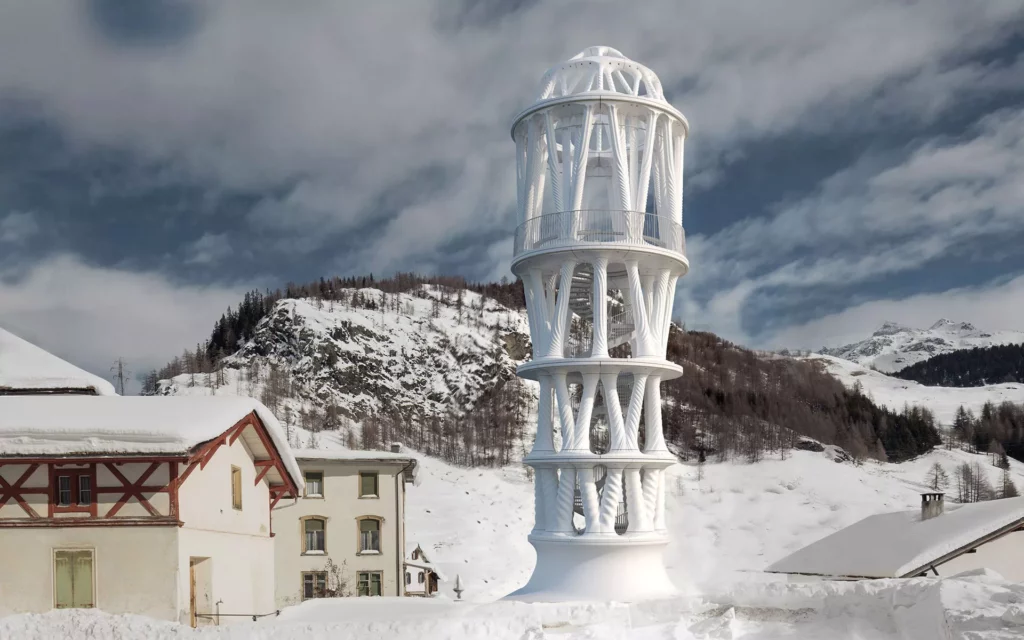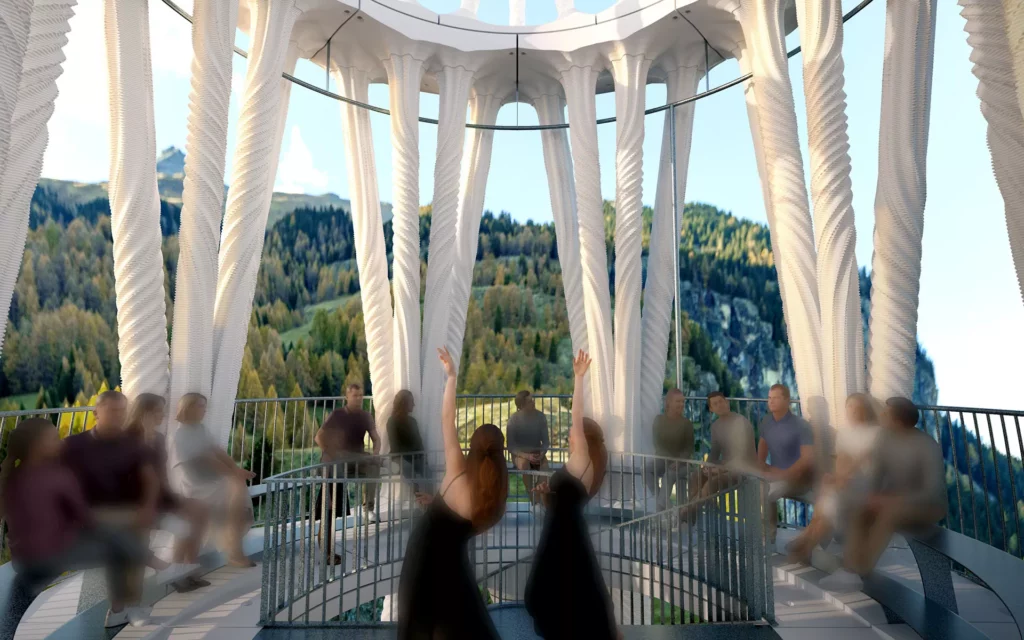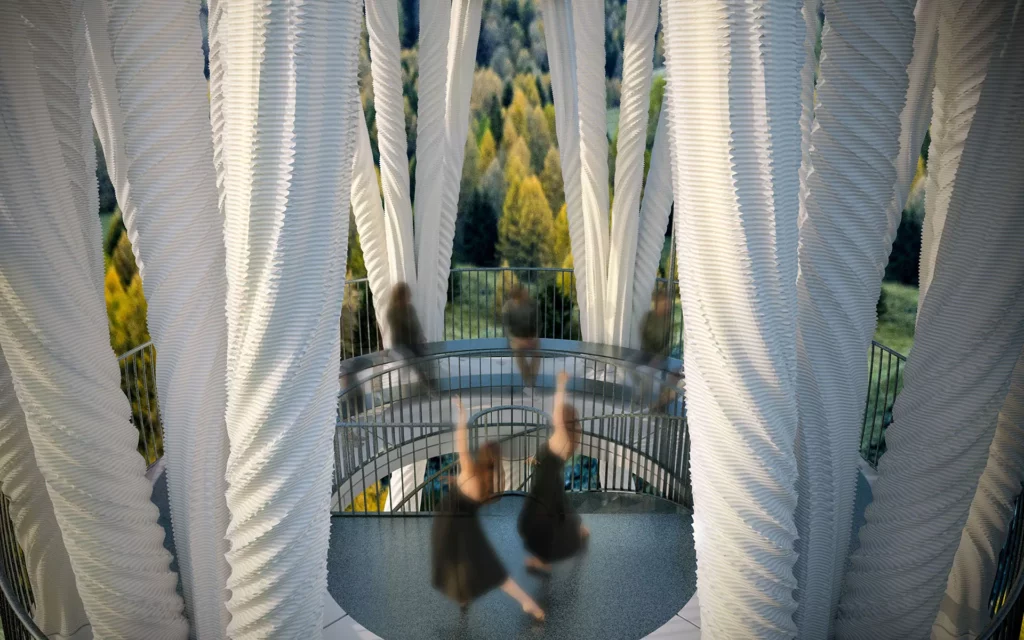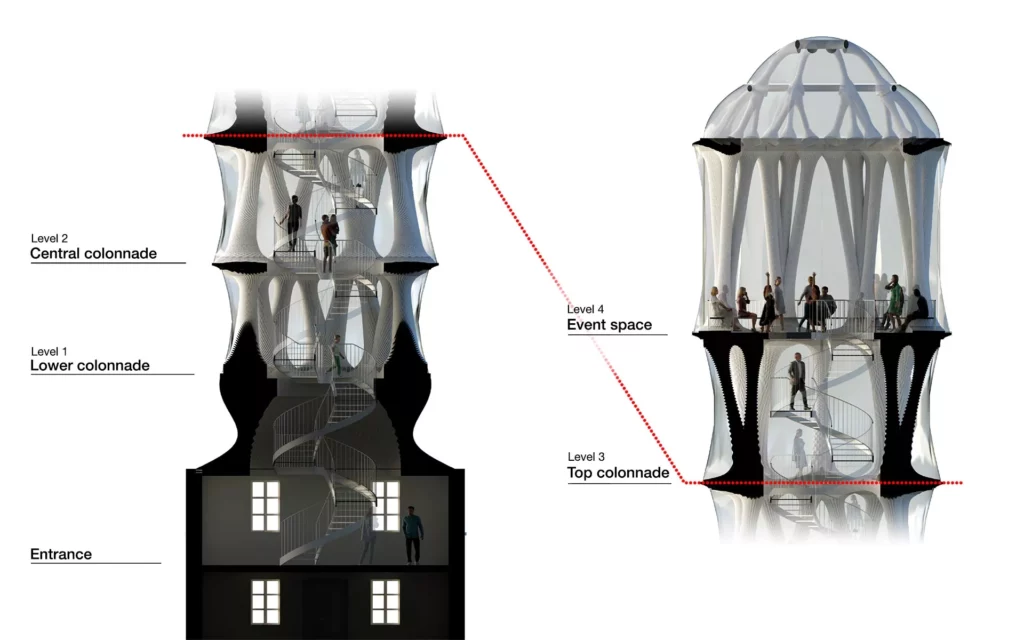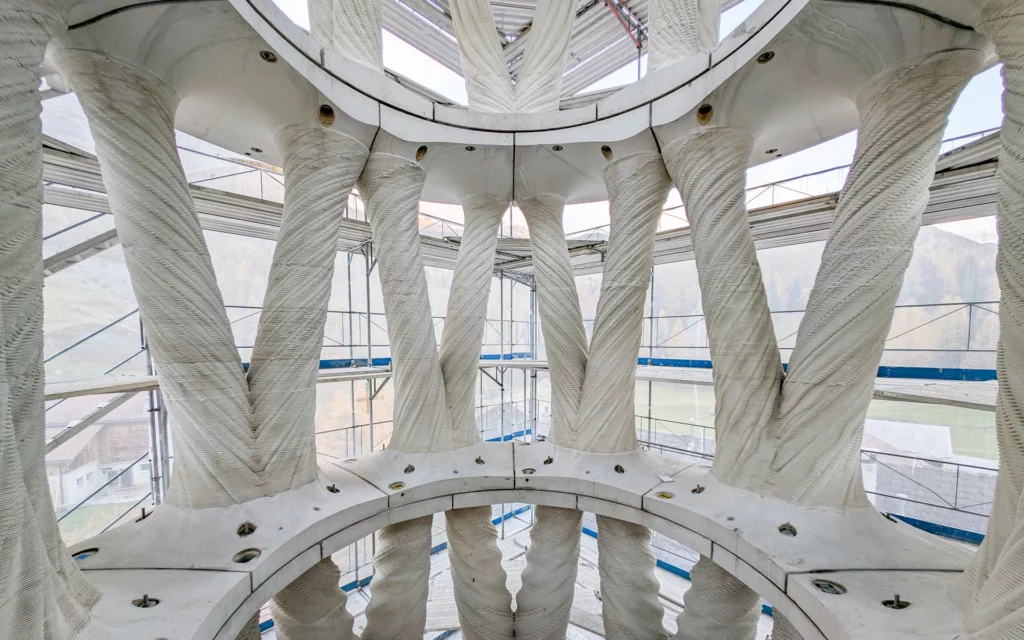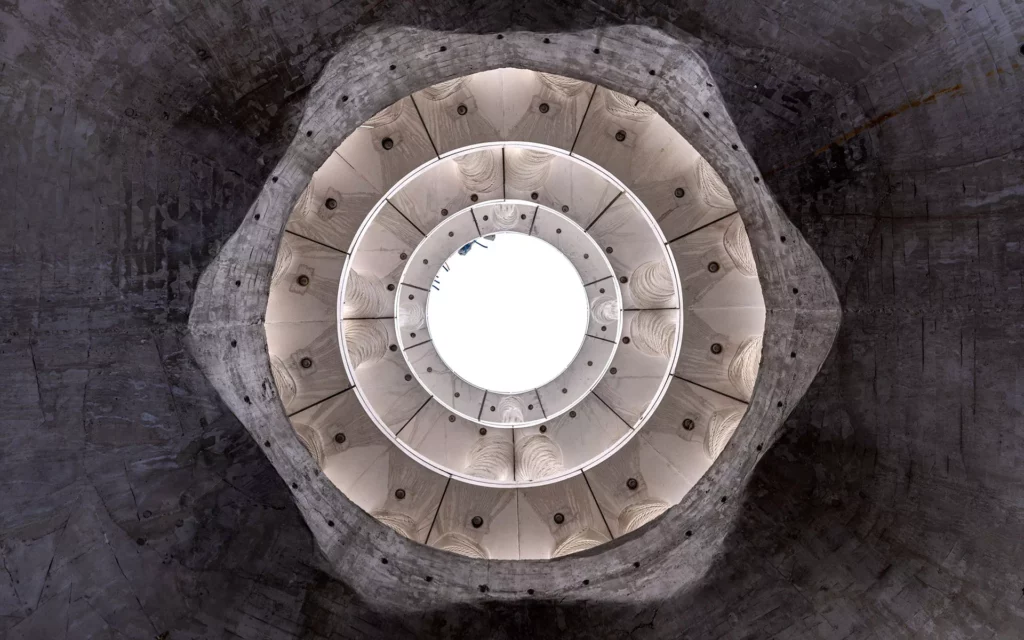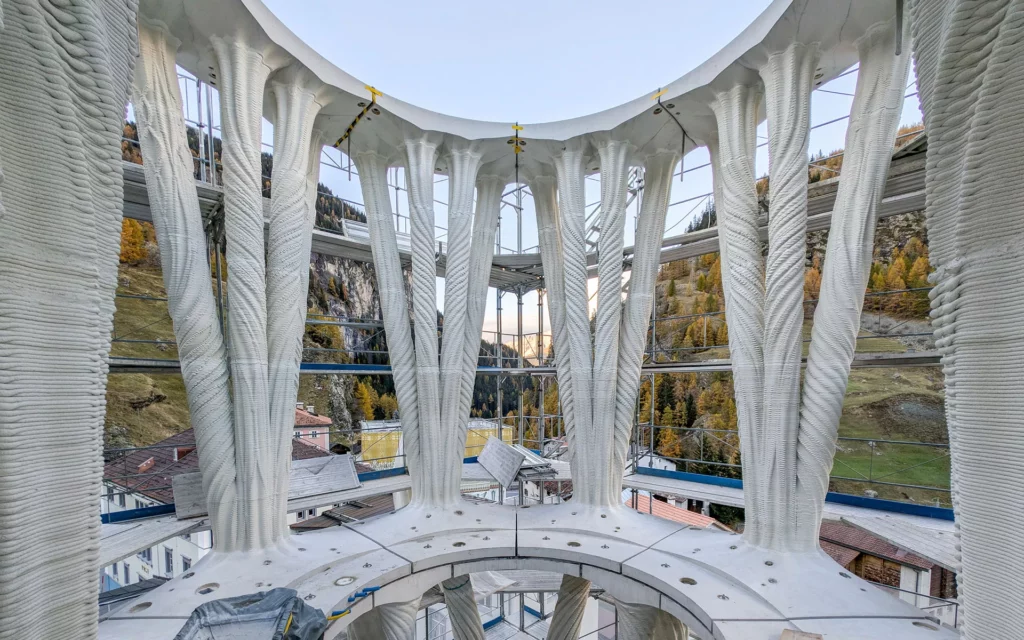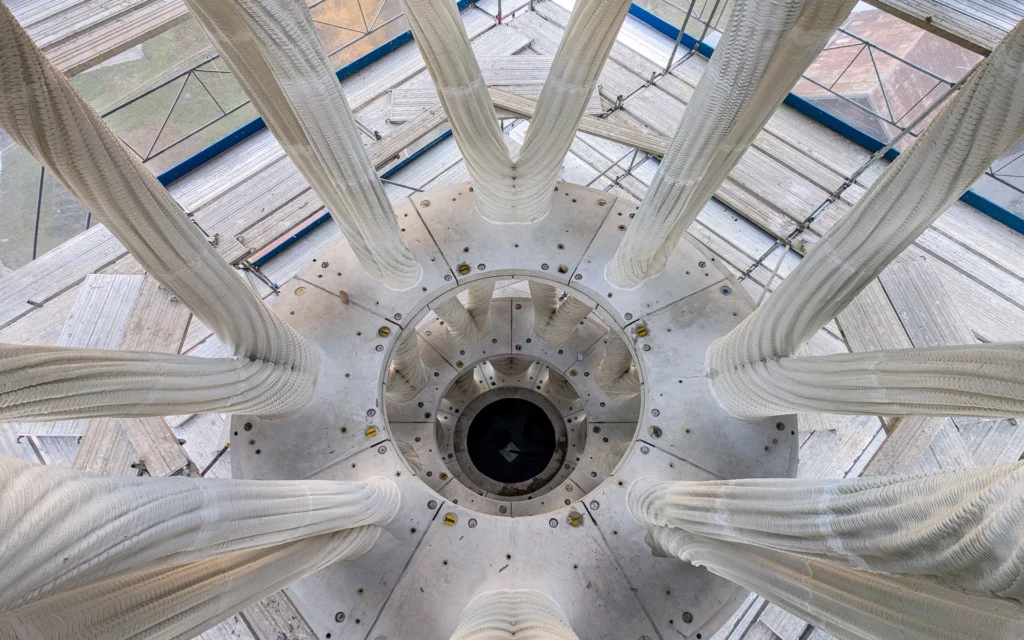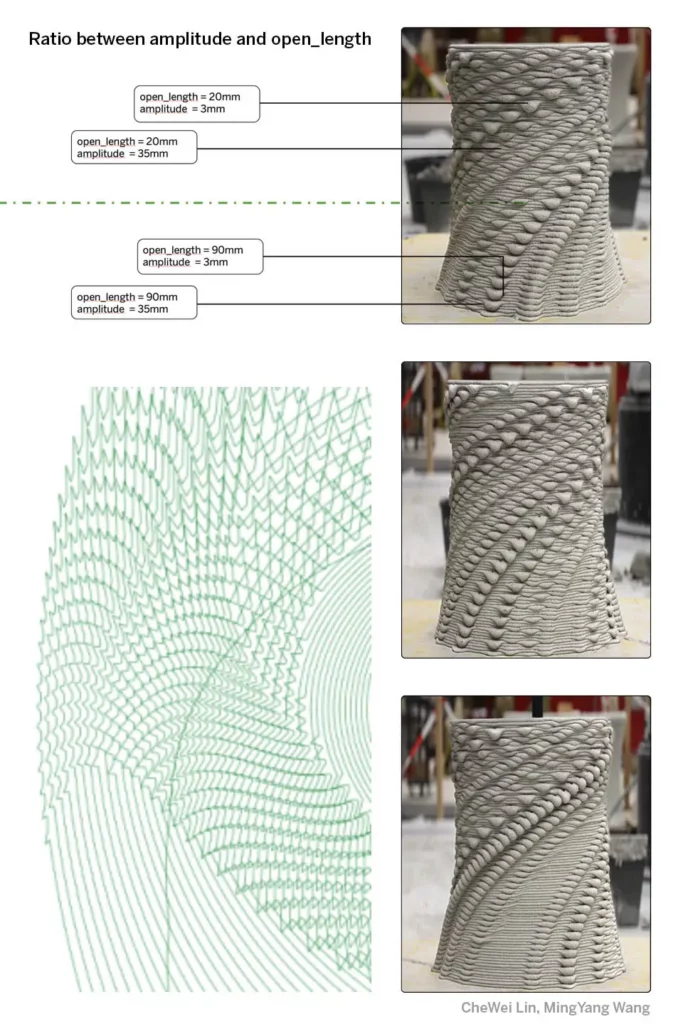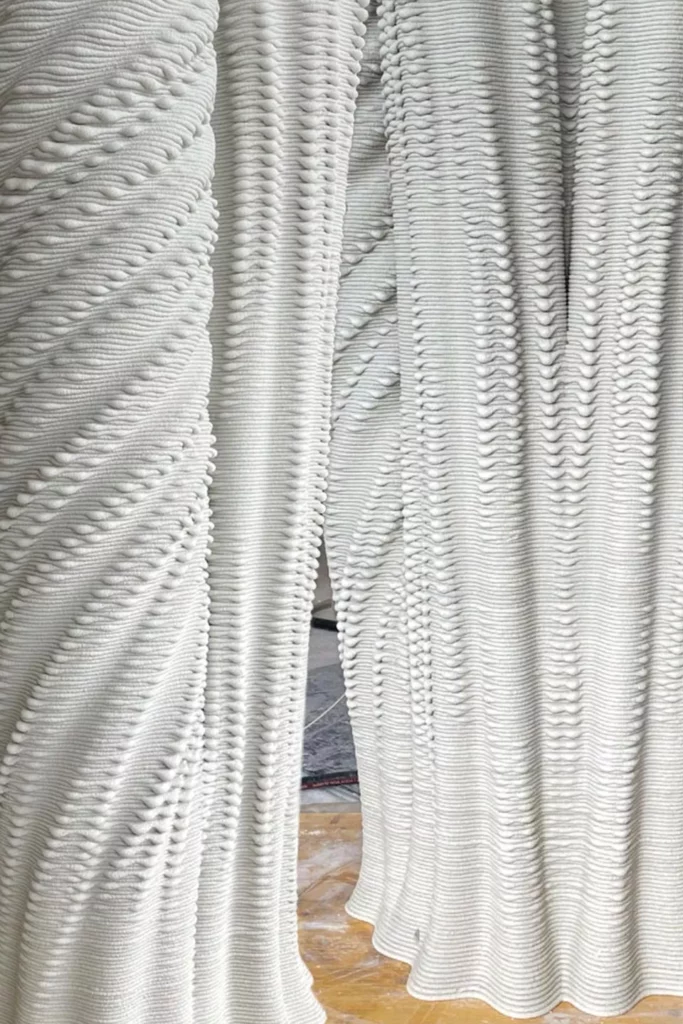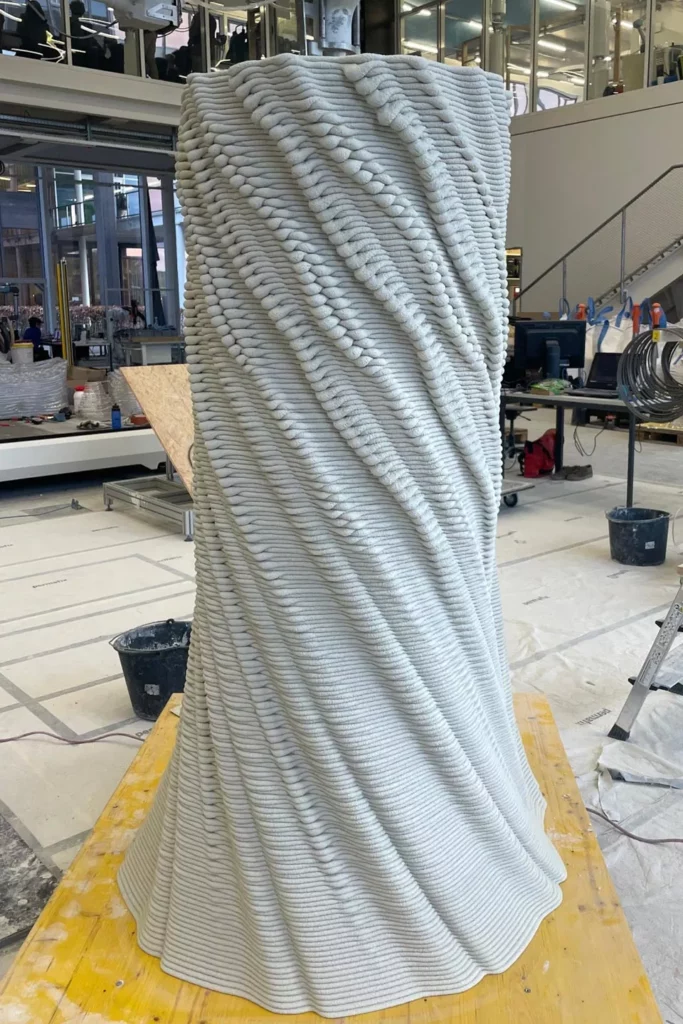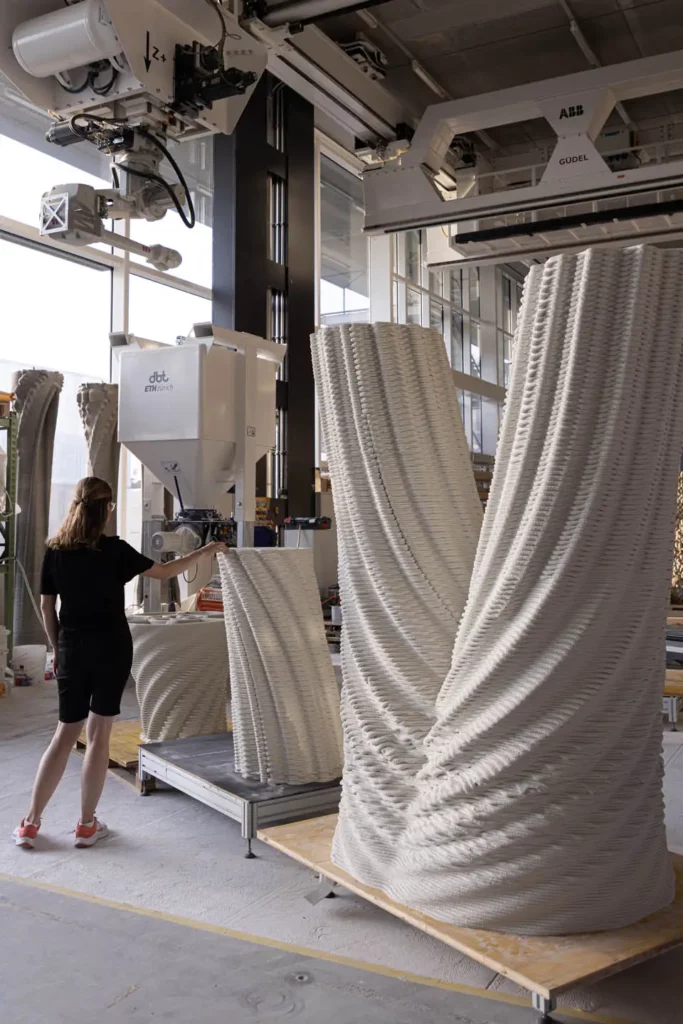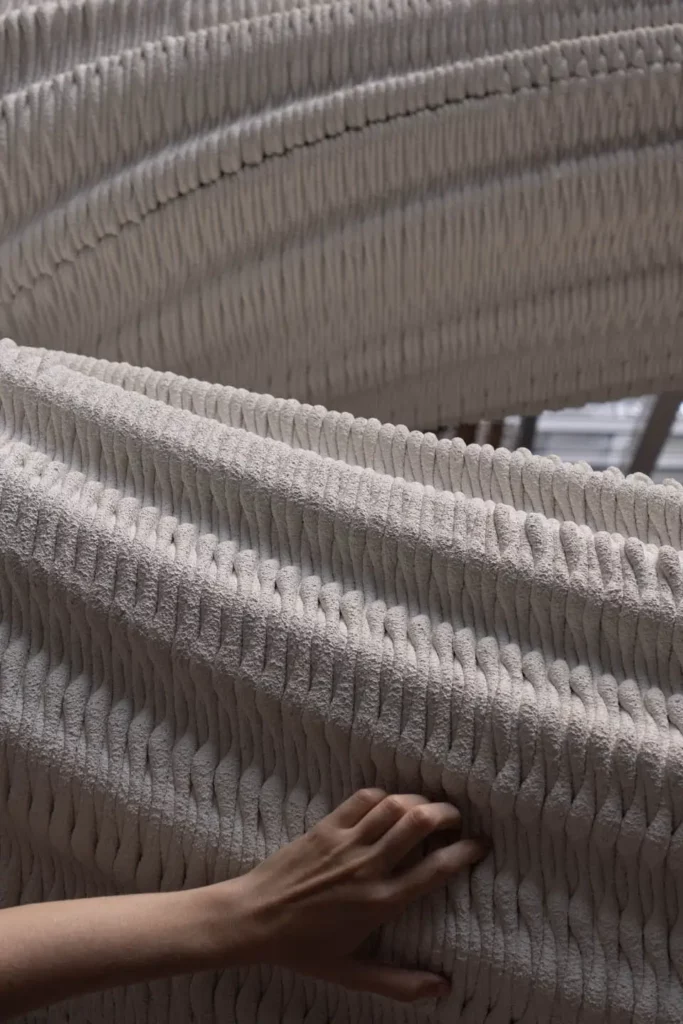With its striking architecture and groundbreaking use of technology, the White Tower exemplifies the transformative potential of computational design and digital fabrication in architecture and construction. The use of 3D printing enables a bold, non-standard approach to architecture, offering an extraordinary range of shapes and forms, while also providing economic and ecological benefits.
The tower embodies a new approach to architectural form, one that operates across multiple scales: from the large organic shape of the structure itself to bespoke branching columns and their intricately ornamented microstructures. Rather than merely replicating conventional building designs, the White Tower project embraces a novel design language that highlights the distinctive qualities of 3D-printed concrete.
As dusk falls, the White Tower transforms, its distinctive openings glowing like a lantern, standing as a lighthouse along the historic Julier Pass route. In winter, the tower will be shielded from the elements by a transparent, removable membrane, protecting it from wind and snow.
A Cupola Theatre above the Village
The White Tower is conceived as a vertical enfilade composed of five floors offering a unique spatial experience. As visitors ascend the spiral staircase, they move through atmospherically rich spaces that range from dark, intimate chambers at the base to light-filled, airy rooms further up. At the top, visitors arrive at the cupola theatre – an intimate performance space with 32 seats and a central stage. This space is topped by an intricate dome supported by eight delicate, branching columns. The theatre can host a variety of small-scale events: concerts with local songs, electronic compositions, author readings, and contemporary choreographies. Visitors enjoy panoramic views over the majestic Alpine landscape of Val Surses.
A Structure of 32 Distinct Columns
The core design element of the tower consists of 32 unique 3D-printed concrete columns that support the different levels of the building and define its facade. These range in form from broad and robust columns with a height of 3.4 meters on the lower floors, to slender, intertwined columns on the top floor, reaching 6 meters in height. Though the forms of these columns differ, they are unified by the consistency of the material, which visually and conceptually ties the entire structure together. The columns’ bright, white concrete and undulating forms enhance the architectural play of light and shadow.
Multiple Scales of Ornament – A Digital Craftsmanship
Thanks to computer-aided design and digital fabrication, each column is unique and features three distinct scales of geometric articulation. At the first scale, columns have an organic, bone-like form that helps absorb lateral forces without additional bracing. To optimize material usage, a secondary scale of articulation is introduced, reinforcing the columns’ thin shells. This scale consists of broad, spiral waves that ascend the surface of the columns, emphasizing the tower’s height. The third scale of articulation adds a unique ornamentation to each column, created by manipulating the extrusion path used in 3D printing the concrete. This material-based ornamentation directly reflects the manufacturing technique and enhances the visual complexity of the structure. Such novel digital craftsmanship recalls the artistry of Baroque builders in Grisons, bridging historical traditions with future innovations.
The White Tower in the Village of Mulegns
The White Tower is built directly on top of the historic carriage depot. The white tower project not only adds a new highlight to the village of Mulegns but also upgrades and restores the entire historic ensemble.
Perched high in the Swiss Alps along the Julier Pass, the village of Mulegns has long held historical significance. Once a stagecoach stop on the route connecting central Switzerland with the Engadine region, it linked Zurich to St. Moritz. Initially, a modest village, many of Mulegns’ inhabitants emigrated to larger cities, working as stuccateurs (plaster craftsmen) and confectioners. Successful returnees built grand villas, and as tourism began to thrive, the village enjoyed a period of prosperity.
Mulegns faces significant structural challenges. Many buildings stand abandoned, and the population has dwindled to 12 residents in 2025. The Origen Foundation is working to preserve the village’s rich cultural heritage and breathe new life into this historic place. Notably, the White Villa – now under federal protection – was recently saved through a remarkable relocation. The historic Post Hotel Löwe has been restored and is welcoming guests once again.
The White Tower marks a new chapter in the village’s renaissance. It is built directly on top of the historic carriage depot, reactivating this formerly abandoned building, which now functions as the tower’s entrance. The foundations of the tower integrate the existing historic vaulted slab construction. The transition between old and new is articulated by a sculptural base fabricated onsite in concrete.
The White Tower, standing as a beacon on the old pass road, will continue to write and reinterpret the village’s history, creating a new chapter in its storied past.
A New Language of Ornament
The 3D-printed extruded concrete of the White Tower enables a distinctive “material-driven” ornamentation that emerges from the inherent properties of the concrete and the robotic deposition process. By introducing subtle variations in printing, such as adjusting the speed and angle of the extrusion, the robot seamlessly creates organic, irregular forms on the columns.
Alchemical Approach
The exact nature of the ornament is difficult to predict through digital modeling alone—its final form arises from an interplay of material behavior, robotic motion, and environmental factors. To navigate this uncertainty, designers create a “cookbook” of ornament recipes, mapping parameter combinations to specific textures and patterns. Each set of inputs yields a distinct aesthetic effect, requiring an iterative, almost alchemical approach to achieve the desired outcome.
New Digital Craftsmanship
The cookbook’s recipes enable mass customization, crafting unique column designs as effortlessly as standard forms. The concrete’s tactile surfaces invite visitors to touch and explore its dynamic form. This fusion of algorithmic precision and material responsiveness invites new possibilities for architectural expression, setting the stage for a new architectural artistry.
